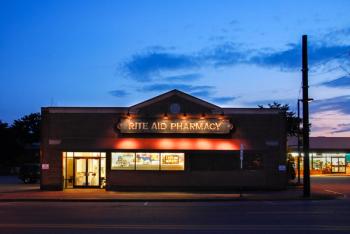
Dual Therapy is an Effective Second-Line Treatment for HIV Patients in Low Income Regions
Treatment de-escalation would reduce adverse events, treatment costs, and the need for virological monitoring.
Dual-therapy containing lamivudine and a boosted protease inhibitor (BPI) was efficacious as a second-line treatment in
Although second-line treatments of HIV recommended by the World Health Organization for patients with HIV in low-income countries have satisfactory efficacy, the need for reduced costs and less toxic maintenance strategies remains high.
In a study published in the Lancet HIV, investigators compared BPI monotherapy with dual therapy containing a BPI plus lamivudine in patients on second-line antiretroviral therapy (ART).
The multicenter, randomized, parallel, open-label, superiority ANRS 12286 MOBIDIP clinical trial was conducted in 3 countries in sub-Saharan Africa: Cameroon, Burkina Faso, and Senegal.
Participants were recruited from a long-term, post-trial cohort of the ANRS 12169/2LADY study, which compared the efficacy of 3 second-line combinations based on
Each patient was HIV-positive with multiple mutations—including M184V—at first-line failure, aged 18 years and older, on BPI plus 3 nucleoside reverse transcriptase inhibitors (NRTI) for at least 48 weeks with at least 48 weeks of follow-up in the 2LADY trial, with 2 viral load measurements of less than 200 copies per mL in the prior 6 months, CD 4 counts of more than 100 cells per μL, adherence of at least 90%, and no change to ART in the past 3 months.
There were 265 participants who were randomized to receive either monotherapy with BPI [darunavir 800-mg once-daily boosted with 100 mg of ritonavir or coformulation of 200 mg of lopinavir with 50 mg of ritonavir] or to BPI plus 300 mg of lamivudine once-daily.
Follow up visits were at weeks 4 and 12, and every 3 months after 96 weeks. If viral load exceeded 500 copies per mL at any visit tenofovir and lamivudine (NRTI) were reintroduced into treatment.
The primary outcomes were the proportion of participants who had treatment failure at 96 weeks in the intention-to-treat analysis. Treatment failure was defined as either a confirmed viral load of more than 500 copies per mL, reintroduction of NRTI, or interruption of boosted protease inhibitor.
The results of the study showed that at week 48, an independent data safety monitoring board reviewed the data and advised discontinuation of the monotherapy group due to the number of failures that exceeded the expected 20%.
Treatment failure occurred in 4 of 132 participants on dual therapy and 33 of 133 on monotherapy. The difference between groups showed superiority of dual therapy compared with monotherapy, according to the authors.
Forty-six adverse events of grade 3 or 4 were recorded in the study. One event in the monotherapy group was related to the study drug. Two participants in the monotherapy group and 1 in the dual therapy group died from causes unrelated to study drugs or procedures, but rather complications from gastric cancer surgery, a work accident, and from a lung disease of unknown cause.
“After viral suppression with boosted protease inhibitor plus NRTI in second-line ART, maintenance therapy with boosted protease inhibitor plus lamivudine was associated with a high rate of success, despite the presence of M184V mutations at first-line treatment failure. Results indicated that boosted protease inhibitor monotherapy cannot be recommended for these patients,” the authors wrote.
The ANRS 12286 MOBIDIP trial is the first to provide evidence of the efficacy of de-escalated second-line therapy. This is less costly and more well tolerated than triple-drug therapy in patients with HIV who have multiple mutations.
The findings suggest that dual therapy with BPI plus lamivudine could be effective in resource-limited countries with economic and virological monitoring constraints. Furthermore, lamivudine could help avoid switching patients to another class of drugs, the authors noted.
Newsletter
Stay informed on drug updates, treatment guidelines, and pharmacy practice trends—subscribe to Pharmacy Times for weekly clinical insights.




















































































































































































































